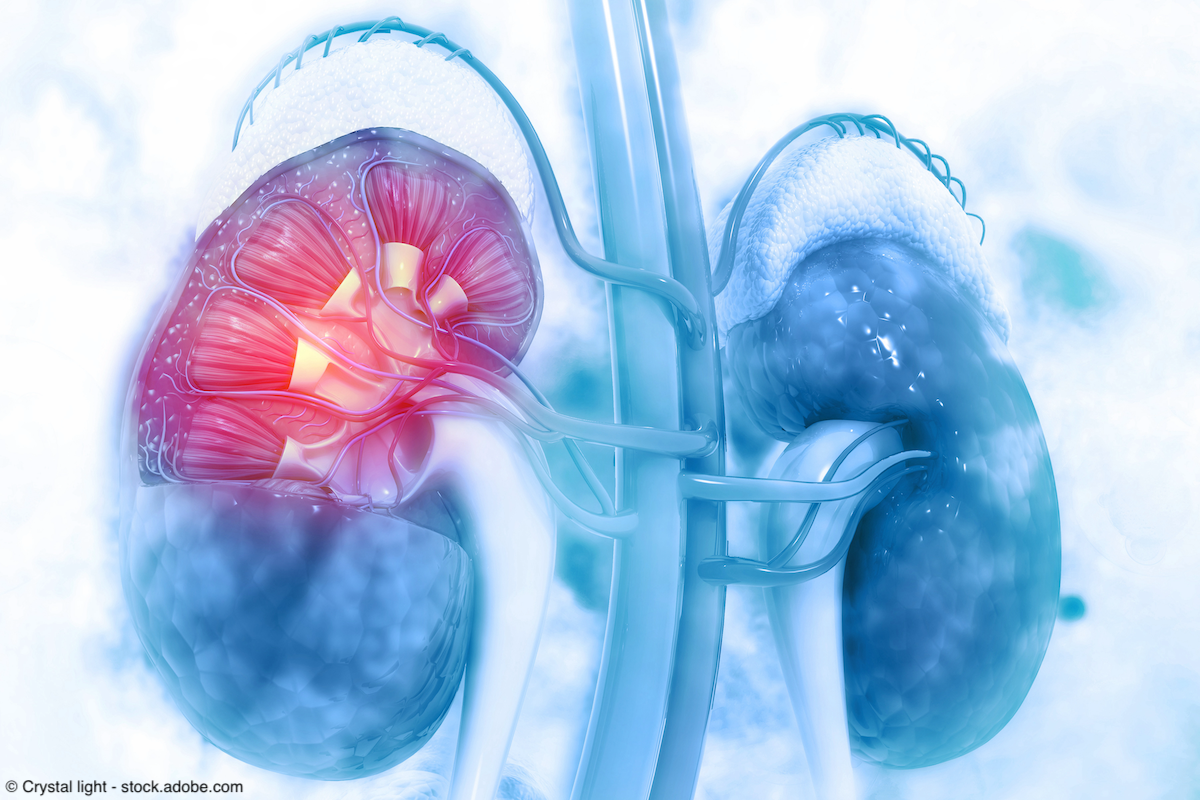Article
Specific comorbidities may predict complications after partial nephrectomy
Author(s):
The results may help guide the decision between a partial and radical nephrectomy in patients with stage T1b to T2 renal cell carcinoma.
Particular comorbidities may be associated with specific partial nephrectomy complications, compared with radical nephrectomy, among patients with T1b to T2 renal cell carcinoma (RCC), according to data presented at the 2023 AUA Annual Meeting.1
“The main takeaway is basically trying to understand what patients should receive: a partial versus radical nephrectomy. So, based on patient-specific predictors—basically, if you identify certain comorbidities in a patient—that should sway you towards a partial versus a radical [nephrectomy], depending on what complications you want to avoid in that specific patient,” said Yash Shah.

“In this tumor size, T1b to T2, there's no official set guideline on [whether you] should do a partial or radical [nephrectomy],” Yash Shah, a medical student collaborating with the Department of Urology, Sidney Kimmel Medical College, Thomas Jefferson University, said in an interview with Urology Times.
“If you [have a] smaller [tumor], like a T1a patient, most people are going to do a partial [nephrectomy], but there are some exceptions. And then, if [you have] a larger [tumor], above T2, most people are going to do a radical [nephrectomy]. But slowly, more and more people are doing partial [nephrectomies] for various reasons, and it has several benefits. But again, it's really up to the surgeon in this population, [based on] their experience. So we're trying to give them more objectivity [with these findings].”
When comparing partial nephrectomy (n = 816) with radical nephrectomy (n = 1278), partial nephrectomy demonstrated an increased risk for readmissions (7.0% vs 4.7%, respectively; P = .026), bleeds (9.19% vs 5.56%; P = .001), renal failure requiring dialysis (1.23% vs 0.31%; P = .013), and urine leak/fistulae (1.10% vs 0.31%; P = .025). Further, the investigators found that open surgery was associated with increased venous thromboembolism (VTE), renal failure, bleeds, urine leak/fistulae, readmissions, and reoperations.
A multivariate regression analysis was conducted to compare partial nephrectomy vs radical nephrectomy complication rates after adjusting for baseline characteristics and surgical approach.
Following the analysis, partial nephrectomy was still significantly associated with bleeds (OR, 1.524; P = .023), especially in patients with dialysis vs no dialysis (25.0% vs 6.7%, respectively; P = .001), bleeding disorders (18.3% vs 6.6%; P = .002), or open surgery; and 30-day readmissions (OR, 1.568; P = .024), especially in patients with renal failure (50.5% vs 5.5%, respectively; P = .017), steroid use, chronic obstructive pulmonary disease (COPD), or open surgery. Shah et al noted that additional patient-specific predictors of relevant complications across procedure type included bleeding disorders, dialysis for bleeds, renal failure, steroid use, COPD, or open surgery.
“The main takeaway is basically trying to understand what patients should receive: a partial versus radical nephrectomy. So, based on patient-specific predictors—basically, if you identify certain comorbidities in a patient—that should sway you towards a partial versus a radical [nephrectomy], depending on what complications you want to avoid in that specific patient,” Shah explained.
To conduct the study, Shah et al utilized the National Surgical Quality Improvement Program database to identify predictors of perioperative morbidity in patients undergoing nephrectomy for localized T1b to T2 RCC. Variables of interest included the surgical procedure and approach, tumor stage, demographics, preoperative laboratory values, comorbidities, infection and VTE, prophylaxis techniques, perioperative complications, operative time, length of hospital stay, 30-day reoperations, and 30-day readmissions.
Following the results, Shah noted that determining such predictive factors can aid surgeons in the shared decision-making process with their patients. “[For example], if a patient for whatever reason cannot afford to get a major bleed, if they don't want to get transfused, then you have that discussion with them and say, if you also have these comorbidities, then a partial [nephrectomy] is probably not a good idea for you, because you don't want to go through a bleed versus maybe other complications,” he explained. “Obviously, you don't want any complications, but there's some complications for certain patients that you want to avoid for them.”
Moving forward, Shah added that there is a need for a novel risk stratification tool to account for patient comorbidities in predicting near-term risk. “Statistically, I think we need to add some more statistical rigor to [future studies],” he concluded.
“So we are working on that, because there's so many variables that we're correcting for. And then the next thing is trying to put this into practice. There's still more comorbidities that we can assess, and taking all that together, and then trying to develop some kind of a risk stratification tool. Nowadays in the clinic, a doctor will pull up a tool, put in specific factors about a patient, and then it'll spit out [what] you should do. So incorporating this data into those existing tools would be nice just to make those decisions more objective.”
Reference
1. Shah Y, Simhal R, Wang K, Goldberg H, Lallas C, Chandrasekar T. Patient-Specific Predictors of Nephrectomy Complications in T1b-T2 Renal Cell Carcinoma J Urol. 2023;209(4):e646. doi:10.1097/JU.0000000000003293.07.
Newsletter
Stay current with the latest urology news and practice-changing insights — sign up now for the essential updates every urologist needs.

















